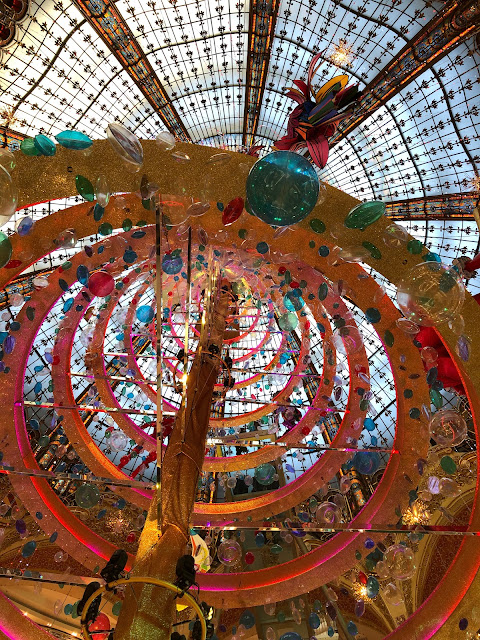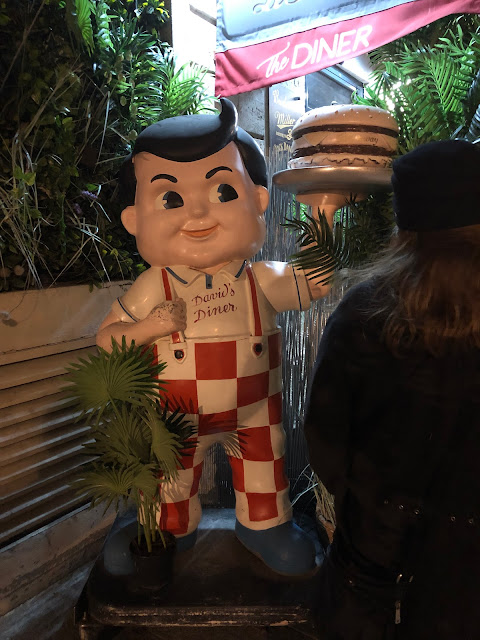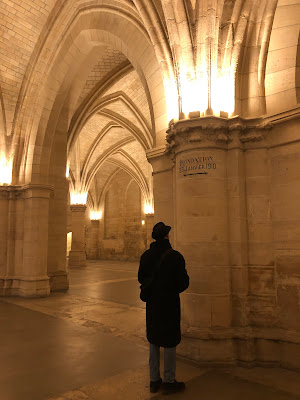A Bit of Christmas Flavor

Under the tree beneath the famed dome of Galeries Lafayette, 9th Arr. Christmas in France tends towards the traditional. There are carnival rides set up around festive markets, where you can buy gift items and holiday treats such as vin chaud (warm mulled wine) and nougat sliced from huge slabs. The patisseries swap in desserts such as bûche de Noël , which are basically thin, buttercream-frosted cakes, rolled like Hostess Ho-Hos into logs ( bûches ) and decorated with sugar mushrooms, ivy, mistletoe, and other woodland symbiotes. These are not to be confused with Catalonia's tio de Nadal , the Christmas log that Catalan children whack with sticks until it shits out candy and presents--like a scatological piñata, with delicious turds substituting for delicious internal organs. More traditional are galettes de rois , flaky cakes stuffed with a creamy almond paste called frangipane . Named for the three kings from the Gospel of Matthew's nativity story, they are traditionally se




